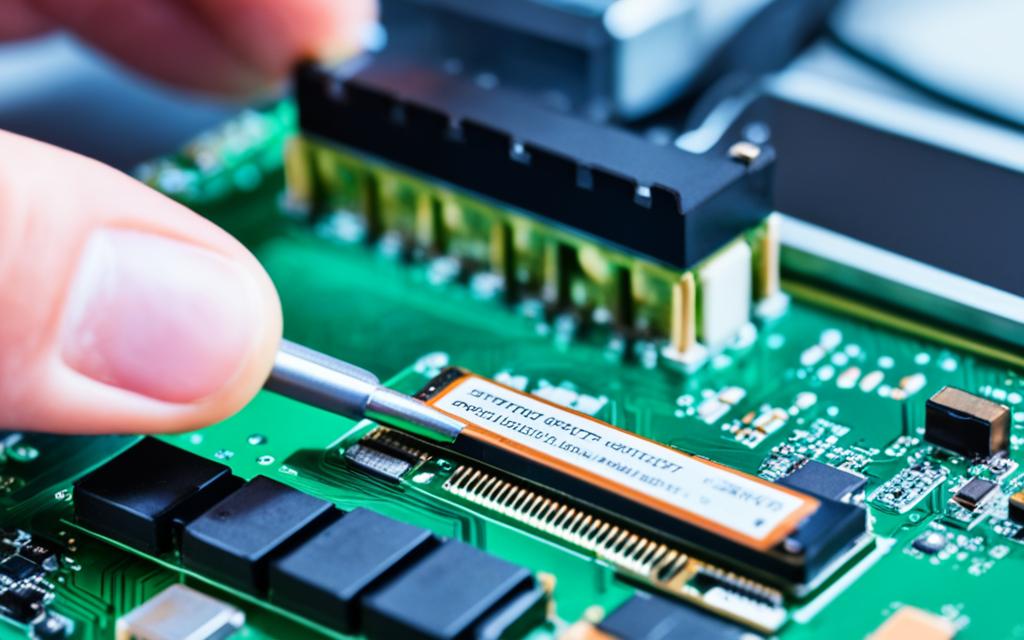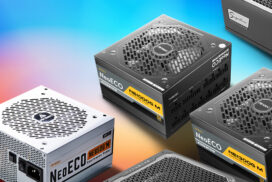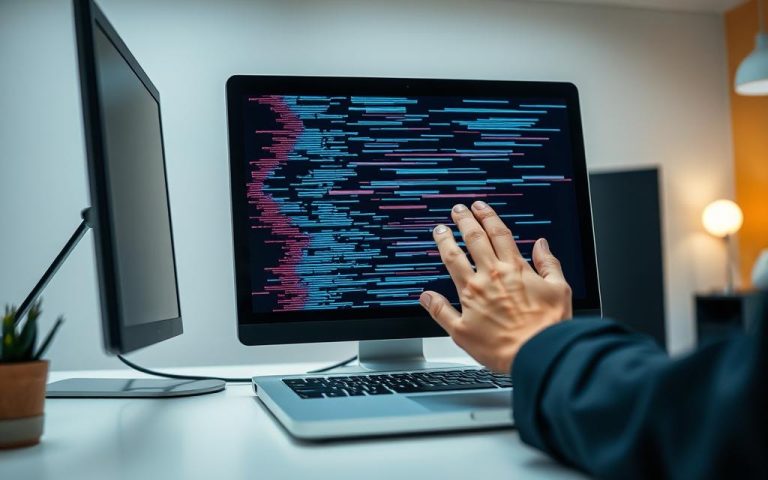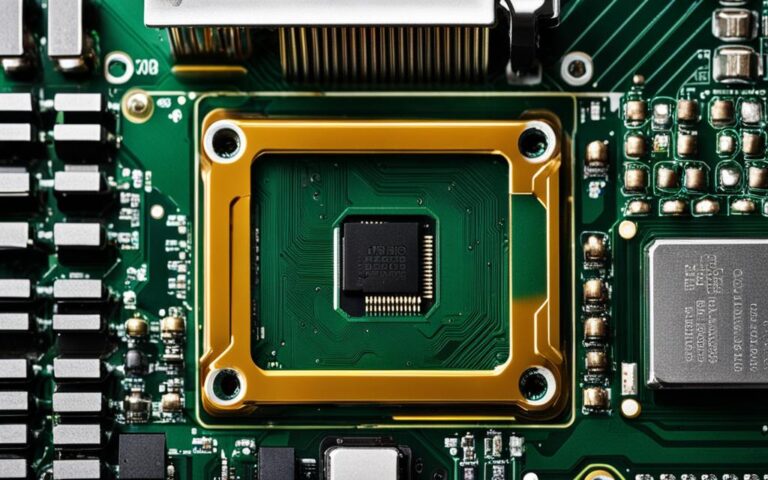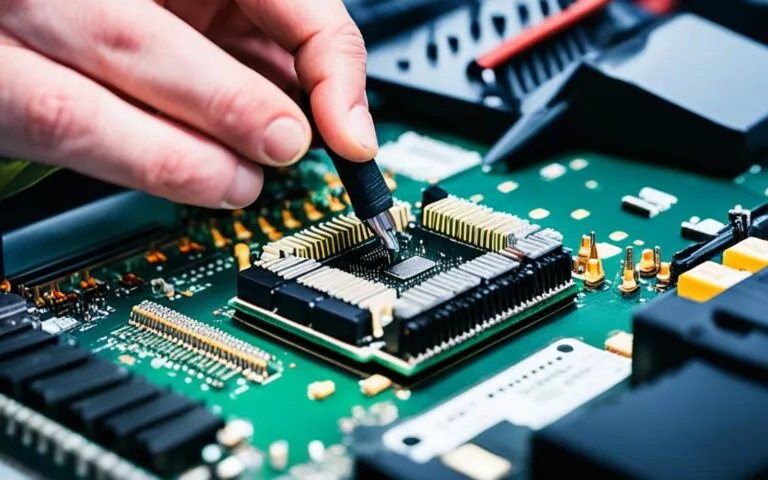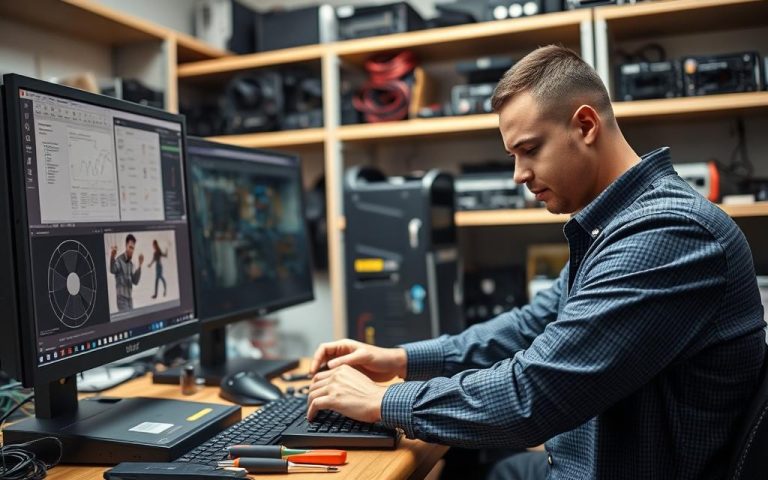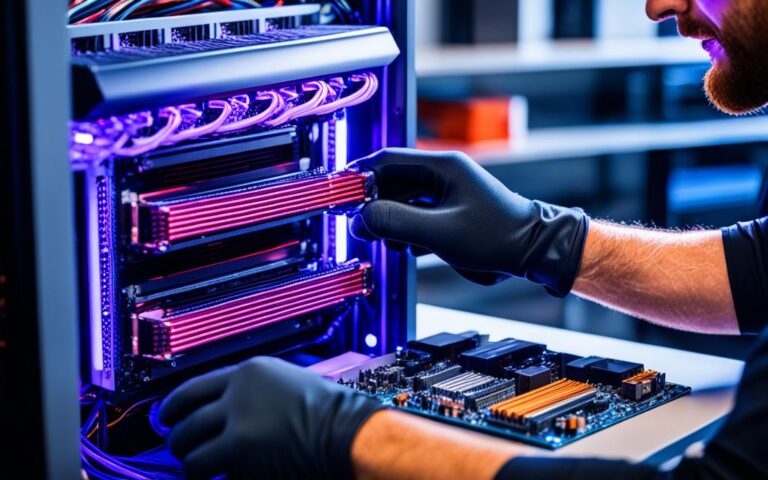Replacing the CMOS Battery to Fix BIOS Problems
Are you experiencing issues with your computer’s BIOS? One simple and effective solution is to replace the CMOS battery. The CMOS battery plays a crucial role in maintaining power to the CMOS circuit, storing important user settings such as date and time. By replacing the battery, you can fix BIOS problems and ensure your computer runs smoothly.
However, it’s essential to understand the process and precautions involved in CMOS battery replacement. When replacing the battery, all user settings in the BIOS Setup Menu will be reset. It’s recommended to check if your motherboard has a storage capacitor to temporarily hold CMOS settings during battery changes. Additionally, make sure to unplug the power supply, discharge any static in your body, and handle the battery carefully to avoid damage.
After replacing the CMOS battery, it’s important to check and secure all power and data connections. You may also need to adjust settings in the BIOS Setup Menu if necessary. By following these steps, you can successfully fix BIOS problems and ensure optimal performance for your computer.
Common Issues after CMOS Battery Replacement
After replacing the CMOS battery, some users may encounter issues when attempting to boot their computers. These issues arise due to the reset of BIOS settings to default, which may not be compatible with specific hardware configurations. In such cases, it is advisable to verify the IDE Channel Master and Access Mode settings, particularly if the computer has multiple storage devices. Additionally, updating the date and time in the BIOS may be necessary. By adjusting these settings, users can effectively troubleshoot and overcome the common issues that occur after CMOS battery replacement.
Here are a few common issues that users may face:
Issue 1: Incompatible BIOS Settings
When the CMOS battery is replaced, the BIOS settings are reset to their default values. These default settings might not be suitable for certain hardware configurations. It is essential to review and adjust the IDE Channel Master and Access Mode settings. This is particularly important if the computer has multiple storage devices, such as hard drives or solid-state drives. Configuring the correct settings can resolve compatibility issues and ensure successful booting.
Issue 2: Date and Time Discrepancies
Replacing the CMOS battery can cause the date and time in the BIOS to reset. Inaccurate date and time settings can lead to authentication errors, certificate issues, and difficulty connecting to the internet or other network services. It is crucial to update the date and time in the BIOS to the correct values. This can be done through the BIOS Setup Menu, where users can set the appropriate date, time, and time zone. Updating these settings will help prevent potential issues and ensure smooth system operation.
Issue 3: Incorrect Boot Device
In some cases, after CMOS battery replacement, the computer may fail to boot from the desired device. This can occur if the boot order settings in the BIOS have been reset. Users need to access the BIOS Setup Menu and verify that the correct boot device is selected as the primary boot option. By configuring the boot order correctly, users can ensure that the computer boots from the desired device, such as the operating system installed on the hard drive or SSD.
“After replacing the CMOS battery, it is essential to review and adjust the BIOS settings to resolve any potential compatibility issues.”
Issue 4: Unrecognized Hardware
In some instances, users may find that certain hardware components are not recognized after replacing the CMOS battery. This can be due to the reset of BIOS settings, which may have disabled or modified specific hardware-related options. It is recommended to check the BIOS settings and ensure that the relevant hardware options, such as USB ports, SATA controllers, or expansion slots, are enabled and configured correctly. By verifying and enabling these settings, users can resolve unrecognized hardware issues and restore full functionality to their computer.
By addressing these common issues and adjusting the BIOS settings accordingly, users can overcome the challenges that may arise after CMOS battery replacement and ensure smooth system operation.
Understanding the Impact on Console Systems
When it comes to console systems, such as gaming consoles, the replacement or removal of the CMOS battery can have a significant impact. Not only does it result in the reset of BIOS settings, but it also affects the date, time, and location settings of the console. This can be problematic as it may disrupt the user’s gaming experience and cause inconvenience.
It’s important to note that the CMOS battery does not store data for the Show File Archive on console systems. However, it is advisable to backup the Show File Archive before transporting the console to avoid any potential data loss or corruption.
When replacing the CMOS battery on a console, it is crucial to purchase the appropriate style of replacement battery based on the console model. In most cases, the replacement battery for consoles is a CR2032. However, it’s essential to check the console’s documentation or consult the manufacturer to ensure the compatibility of the replacement battery.
The battery connector orientation may vary across different console models, so it’s vital to select the correct battery with the appropriate connector orientation. This ensures a proper fit and prevents any potential damage to the console during the replacement process. Take the time to double-check the compatibility and orientation before proceeding with the replacement.
By understanding the impact of CMOS battery replacement on console systems and taking the necessary precautions, console users can ensure a smooth and hassle-free experience without any disruption to their gaming activities.
Key Points:
- Replacing the CMOS battery on console systems resets the BIOS settings, date, time, and location settings.
- Backup the Show File Archive before transporting the console to prevent data loss.
- Check the console’s documentation or contact the manufacturer to find the appropriate replacement battery.
- Verify the battery connector orientation for a proper fit and avoid damaging the console.
Finding the Right Replacement Battery
When replacing the CMOS battery, it is essential to find the correct replacement battery. The most commonly used battery is the CR2032. It can be easily sourced online or from an ETC Dealer. However, it is important to note that there may be a subtle difference in connector type or polarity for batteries labeled CR2032W. Different console models may require different battery styles, so it is necessary to check the console specifications or consult the manual to ensure the correct replacement battery is purchased.
| Console Model | Required Battery |
|---|---|
| Eos ClassicIon | CR2032 |
| Element | CR2032 |
| Gio | CR2032 |
| Eos Ti | CR2032 |
| Eos Apex Consoles | CR2032 |
| Gio @5 | CR2032 |
| Ion Xe | CR2032 |
| Ion Xe 20 | CR2032 |
| Element 2 | CR2032 |
Here is a list of console models and their corresponding required battery:
- Eos ClassicIon – CR2032
- Element – CR2032
- Gio – CR2032
- Eos Ti – CR2032
- Eos Apex Consoles – CR2032
- Gio @5 – CR2032
- Ion Xe – CR2032
- Ion Xe 20 – CR2032
- Element 2 – CR2032
“It is better to be safe and double-check the console specifications or consult the manual before purchasing a replacement battery.”
Remember that selecting the correct replacement battery is crucial for maintaining proper functionality in your computer or console. Take the time to verify the specifications and consult the manual if needed. By finding the right replacement battery, you can ensure that your CMOS continues to operate smoothly and avoid any compatibility issues.
Compatibility for Different Console Models
The compatibility of the CMOS battery is an essential consideration when replacing it in console models. The CR2032 battery proves to be a widely compatible option for various console models. These include early models like the Eos ClassicIon, Element, Gio, Eos Ti, and Eos Apex Consoles. Later models such as the Gio @5, Ion Xe, Ion Xe 20, and Element 2 also utilize the CR2032 battery for their CMOS needs.
It is worth noting that specific console models may have distinguishing features, such as different USB port colors or battery orientation requirements. To ensure the correct battery compatibility, it is advisable to refer to the console documentation or contact the manufacturer for accurate information.
| Console Models Compatible with CR2032 Battery | |
|---|---|
| Early Models | Eos ClassicIon, Element, Gio, Eos Ti, Eos Apex |
| Later Models | Gio @5, Ion Xe, Ion Xe 20, Element 2 |
Tips for Proper Battery Replacement
When replacing the CMOS battery, it is crucial to follow proper procedures to avoid damage or further issues. Proper CMOS battery replacement ensures the smooth functioning of your computer or console. Here are some essential tips to consider:
- Turn off the power: Before replacing the CMOS battery, make sure to unplug the power supply from the computer or console. This precaution protects you from any electrical shock and prevents damage to the hardware.
- Discharge static electricity: To avoid static discharge, touch a metal object (such as the computer case) before handling the CMOS battery. This step minimizes the risk of damaging sensitive components.
- Avoid bare finger contact: When handling the new CMOS battery, avoid touching it with bare fingers. The natural oils on your skin can cause corrosion and attract dust particles, affecting the battery’s performance. Instead, use a clean sock or wear gloves to handle the battery.
- Clean the interior: While the case is open, take the opportunity to clean any dust or debris from the interior of your computer or console. Use compressed air or a soft brush to gently remove any accumulated dust. A clean interior helps with proper airflow and cooling.
- Inspect power and data connections: After replacing the battery, thoroughly inspect all power and data connections. Ensure that cables are securely connected and fastened. Loose connections can result in poor performance or malfunctioning.
Following these tips will help you perform a proper CMOS battery replacement and prevent any damage to your computer or console. Now, you’re ready to boot up your system and enjoy uninterrupted performance.
Troubleshooting Common Issues
If issues persist after replacing the CMOS battery, there are additional troubleshooting steps that can be taken. Resetting the BIOS settings to fail-safe defaults or optimized defaults may help resolve compatibility issues. It is also recommended to check for loose power and data connections and ensure that the battery was properly inserted. If the problems persist, seeking assistance from technical support or consulting the user manual for specific troubleshooting steps may be necessary.
When encountering persistent issues after replacing the CMOS battery, troubleshooting becomes crucial in resolving compatibility and functionality problems. Through a series of steps, users can determine the underlying causes and find solutions to ensure proper system operation.
1. Resetting BIOS Settings: In some cases, resetting the BIOS settings to either fail-safe defaults or optimized defaults can rectify compatibility issues that arise after CMOS battery replacement. By restoring the default settings, any misconfigurations that may have occurred during the battery replacement process can be resolved.
2. Checking Power and Data Connections: It is important to verify that all power and data connections are secure and properly connected. Loose or faulty connections can lead to various system malfunctions. By ensuring all cables and connectors are firmly in place, issues related to power supply or data transfer can be mitigated.
3. Verifying Battery Insertion: Double-checking the CMOS battery insertion is essential in troubleshooting battery replacement problems. It is crucial to ensure that the battery is inserted with the correct polarity and securely seated in its socket. A loose or incorrectly inserted battery can disrupt the normal functioning of the CMOS circuit.
If the troubleshooting steps mentioned above do not resolve the issues, seeking technical support or referring to the user manual for further guidance is recommended. Technical experts can provide tailored solutions based on specific system configurations and offer in-depth assistance in resolving complex problems.
Conclusion
Replacing the CMOS battery is a common solution for fixing BIOS problems and ensuring the proper functioning of a computer or console. It is crucial to follow proper procedures and consider compatibility factors when selecting the replacement battery. By understanding the impact on user settings and taking necessary precautions, users can successfully replace the CMOS battery and resolve common issues related to BIOS settings. However, if issues persist, it is advisable to seek assistance from technical support or consult the user manual for specific troubleshooting steps.
FAQ
Why is the CMOS battery important in a computer?
The CMOS battery is important for maintaining power to the CMOS circuit in a computer. It stores user settings such as date and time.
What happens to the user settings in the BIOS Setup Menu when replacing the CMOS battery?
When replacing the CMOS battery, all user settings in the BIOS Setup Menu will be reset.
What should I do before removing or replacing the CMOS battery?
Before removing or replacing the CMOS battery, it is crucial to ensure that the power supply is unplugged and to discharge any static in your body.
What should I do after replacing the CMOS battery?
After replacing the CMOS battery, it is recommended to check and secure all power and data connections and boot into the BIOS Setup Menu to adjust settings if necessary.
Why may some users experience issues with booting their computers after replacing the CMOS battery?
Some users may experience issues with booting their computers after replacing the CMOS battery because the BIOS settings may be reset to default, which may not be compatible with certain hardware configurations.
What settings should I check if I experience booting issues after replacing the CMOS battery?
If you experience booting issues after replacing the CMOS battery, it is recommended to check the IDE Channel Master and Access Mode settings, especially if the computer has multiple storage devices. Updating the date and time in the BIOS may also be necessary.
What happens to the BIOS settings and date/time/location settings in console systems when the CMOS battery is removed?
Removing the CMOS battery in console systems can result in the reset of BIOS settings and the date/time/location settings.
Should I backup the Show File Archive before transporting a console system?
While the CMOS battery does not store data for the Show File Archive, it is advisable to backup the Show File Archive before transporting the console.
What type of replacement battery is usually used for console systems?
The replacement battery for console systems is usually a CR2032. It is important to purchase the appropriate style of replacement battery based on the console model.
Are all CR2032 batteries suitable for console systems?
Different console models may require different battery styles, so it is necessary to check the console specifications or consult the manual to ensure the correct replacement battery is purchased.
What console models are compatible with the CR2032 battery?
The CR2032 battery is compatible with various console models, including Eos ClassicIon, Element, Gio, Eos Ti, Eos Apex Consoles, Gio @5, Ion Xe, Ion Xe 20, and Element 2. It is important to refer to the console documentation or contact the manufacturer to determine the correct battery compatibility.
What precautions should I take when replacing the CMOS battery?
When replacing the CMOS battery, it is crucial to ensure that the power supply is unplugged and to discharge any static in your body. Avoid touching the new battery with bare fingers to prevent corrosion and attract dust. It is also a good opportunity to clean any dust from the interior of the computer or console.
What can I do if issues persist after replacing the CMOS battery?
If issues persist after replacing the CMOS battery, you can try resetting the BIOS settings to fail-safe defaults or optimized defaults. It is also recommended to check for loose power and data connections and ensure that the battery was properly inserted. If problems persist, seeking assistance from technical support or consulting the user manual for specific troubleshooting steps may be necessary.
How can replacing the CMOS battery fix BIOS problems?
Replacing the CMOS battery is a common solution to fix BIOS problems and ensure the proper functioning of a computer or console. It helps restore power to the CMOS circuit and stores user settings, allowing the system to function correctly.
